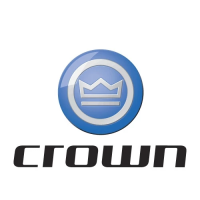Warning 1
You Must be Trained 2
Protect Yourself 3
Contents 5
What's in it for You? 6
Your Stockpicker 7
Lift Truck Parts 9
Capacity & Load Center 11
Capacity Plate 13
Display Panel Standard 15
Driving on Wire Guidance 17
Power On & Off 19
Foot Brake 20
Traveling & Plugging 21
Raise & Lower 25
Platform Safety 27
Daily Safety Check 29
Be a Safe Driver 31
Battery Maintenance 35
Warning Labels 40
Contents
5 Contents
What's in it for You?
What's in it for You? 6
WHAT'S IN IT FOR YOU?
The better you understand your truck and how to use
it, the better and safer operator you can be. Here are
some guides to using this manual.
QUICK LOCATORS
In addition to the "Contents" page
you can use page headings to fi nd
topics. Some pages also have a
picture of the truck in the corner
showing features or functions
covered on that page
.
"KNOW THE HAZARDS"
Watch for and read these special
blocks. You will fi nd information
about possible safety hazards and
how to avoid them
.
HOW-TO-DRAWINGS
On many pages you will fi nd
pictures as well as text to help you
understand how to use your truck
safely and productively.
Know the Hazards
WHAT IS YOUR TRUCK CAPACITY?
Capacity is the load (including pallet, cart,
container etc.) that can be lifted to a given height
at a given load center. See the capacity plate
on your truck. Make certain you use the correct
units of measure.
WHAT IS LOAD CENTER?
Load center is the distance from the end of the
operator platform to the center of an evenly
distributed load.
LOADS MUST BE EVENLY DISTRIBUTED
Your truck could tip over, in any direction, if a
load is placed or shifted to the front, back or
side of a pallet, cart, platform or container.
Make sure you spread the load evenly as you
load a pallet.
KNOW YOUR LOAD
Do not exceed the capacity shown on your truck's
capacity plate. Be careful when handling long, high or
wide loads. Do not handle unstable loads.
EXCEEDING TRUCK CAPACITY CAN CAUSE AN ACCIDENT
Know the capacity of your truck as shown on your
capacity plate. Make certain you use the correct units
of measure. Pay attention to:
• Weight of load plus attachments
• Load center
• Lift height
CENTER THE LOAD
Your truck could tip over if a load is placed or shifted
to the front, back or side of a pallet or container.
Make sure your load is evenly distributed and
centered over the forks.
Center of evenly
distributed load
600mm
(24 in.) Max
761-B
SP
series
SAMPLE
SAMPLE
Load
Center
4000

